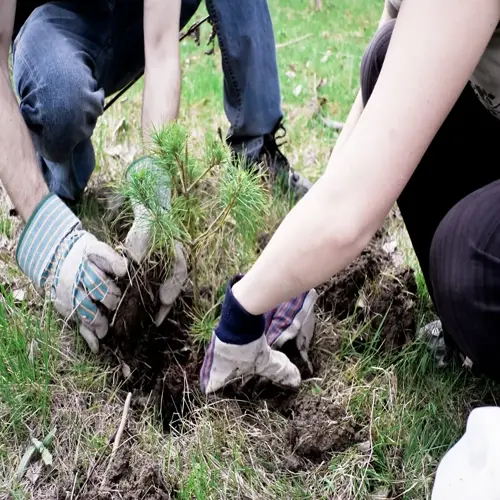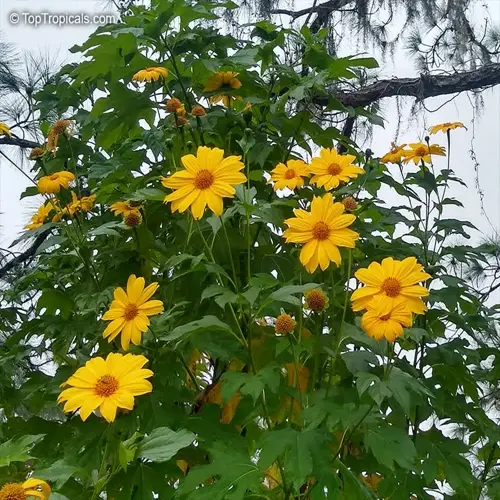When to Plant Vegetable Garden: Ultimate Guide

Written by
Kiana Okafor
Reviewed by
Prof. Samuel Fitzgerald, Ph.D.The key to determining when to plant a vegetable garden is frost dates in your area.
Cool-season crops can thrive in temperatures below 75°F and are typically planted 4-6 weeks before your last frost.
Warm-season vegetables are started once the soil has warmed to a temperature greater than 60°F and when you know that frost is no longer a danger.
The most common mistakes planting plants is to overcrowd plants and not pay attention to frost dates.
Succession planting is a great way to extend harvests - for example, plant fast-growing crops like radishes every two weeks.
Annual, a garden journal is a good way to keep track of your planting dates, as you can have a yearly model for timing.
Article Navigation
Mastering when to plant a veggie garden determines your success. Good timing gives you a boost in yields, fewer pest problems, and keeps plants vigorous. I learned this the hard way after losing some of my early tomatoes to the cold. Soil temperature and last frost date are your two most important guides. Disregard them, and your plants will suffer.
This guide simplifies complicated planting schedules that often confuse beginning gardeners. It transforms charts into clear action steps. By following these steps, you can avoid many common timing errors and allow your garden to flourish with less work. Start here to grow with confidence, again and again, in the seasons to come.
Regional Climate Adjustments
More than any calendar, your USDA hardiness zone dictates planting schedules. Use the USDA web map to find your zone. Zones 3-5 have brief seasons punctuated by severe frost. Zones 8-9 struggle with searing heat waves. The zone tells you to grow lettuce during the cool season or to wait until June to plant tomatoes, avoiding any disasters that may occur when planting seeds.
Cultivate cold-hardy crops, such as kale and carrots, in Zones 3-5, crops that endure early frosts that eliminate tomatoes. I use row covers to extend my growing season by weeks, trapping warmth over seedlings during fickle spring nights. These row covers essentially double harvests in shorter seasons.
For Zones 8-9, select heat-tolerant varieties. Okra and sweet potato excel when lettuce bolts. Shade cloth protects young plants from the burning sun. Maintain over summer seedlings. In hot, dry conditions, this simple tool helps keep the soil moist and prevents wilting.
Common Planting Mistakes
When plants are overcrowded, they can harbor diseases and deprive vegetables of nutrients. Zucchini, for instance, requires 24-36 inches of space between plants. It makes sense to thin carrot seedlings at an early stage. Crowded tomatoes produce 30% less fruit than tomatoes with adequate spacing. The importance of spacing is to allow for air flow and provide room for roots to grow.
Disregarding frost dates kills tender seedlings. First thing, check your area's last frost date. When the soil temperature is 60°F, it is safe to plant tomatoes. I lost a whole crop of peppers to the late frost one year. Soil thermometers are useful for confirming the soil's warmth before planting.
When you don't take care of the soil, plants will exhibit stunted growth and fail to produce a useful yield. Have your pH tested every year. Amend with compost before seeding. Carrots will fork in rocky soil. Tilling the beds to a depth of 12 inches will also improve soil structure. Healthy soil will feed your plants throughout the growing season.
"Because watering is inconsistent, it puts stress on the plants. This is because you will want to water very deeply about twice a week. To ensure even moisture, use a drip irrigation system. Blossom-end rot torments tomatoes that are watered at different times. Use straw mulch to retain moisture. Plants need even moisture."
If you skip crop rotation, it can lead to insect infestations and deplete the soil. Rotate plant families each year. For instance, beans follow tomatoes to rebuild nitrogen. Clubroot can persist in the soil for up to 20 years. If necessary, rotate brassicas every 3 to 4 years. Healthy soil is a result of good soil planning.
Overcrowding Plants
- Problem: Planting too closely reduces air circulation, leading to disease and competition for nutrients.
- Solution: Follow seed packet spacing (e.g., zucchini needs 24-36 inches between plants). Thin seedlings early.
- Example: Crowded tomatoes produce 30% fewer fruits due to light and nutrient competition.
Ignoring Frost Dates
- Problem: Planting tender crops too early kills seedlings; late planting shortens the growing season.
- Solution: Check local last frost date (use USDA resources). Plant tomatoes only when soil reaches 60 °F (16 °C).
- Tip: Use soil thermometers to verify temperatures before planting warm-season crops.
Neglecting Soil Preparation
- Problem: Poor soil causes stunted growth and low yields. Imbalanced pH locks away nutrients.
- Solution: Test soil pH annually (target 6.0-7.0). Amend with compost (2-4 inches) before planting.
- Example: Carrots develop forked roots in compacted or rocky soil; till to 12 inches deep.
Inconsistent Watering
- Problem: Irregular watering stresses plants, causing blossom-end rot in tomatoes and bolting in lettuce.
- Solution: Water deeply 1-2 times weekly (1 inch total). Use drip irrigation for even moisture.
- Tip: Mulch with straw to reduce evaporation and maintain consistent soil moisture.
Skipping Crop Rotation
- Problem: Repeating crops in the same spot depletes nutrients and builds up pests/diseases.
- Solution: Rotate plant families annually (e.g., follow tomatoes with beans to restore nitrogen).
- Example: Clubroot disease persists 20 years in soil; rotate brassicas every 3-4 years.
Cool Season Vegetables Guide
Plant cool-season vegetables 4 to 6 weeks before the last frost. Spinach grows well at temperatures ranging from 45 to 75°F and takes 40 to 50 days to mature. Kale tolerates frost and matures in 55 days. Peas grow most actively at temperatures between 40°F and 75°F. These vegetables thrive in soil with pH levels ranging from 6.0 to 7.5. Harvest leaves from outside to sustain the crop.
Carrots require deep, loose soil and have a 70-day growing cycle, while radishes mature quickly, taking only 25 days. Broccoli requires consistent moisture and should be spaced 18 inches apart. Garlic planted in the fall takes 240 days or more to mature. For reliability, I grow frost-tolerant varieties, such as cabbage. Cabbage withstands unexpected cold snaps.
Use succession planting to maintain a continuous harvest. For example, I will sow radishes every two weeks. I will plant new lettuce every 10 days. I follow early spinach with beets. This fills in between harvests. I always have fresh greens when I do this in the spring and fall.
Warm Season Vegetables Guide
Plant these warm-season vegetables after the last frost, while the soil has warmed up to 60°F. Tomatoes prefer soil temperatures between 70°F and 95°F, along with plenty of sunlight and a cage for support. Peppers like soil temperatures between 75-85°F and soil that stays consistently moist. Cucumbers like soil temperatures between 70-95°F. Space plants appropriately to promote airflow and deter disease.
Warm-season crops require full sunlight. Eggplants prefer soil temperatures of 75-90°F and should be staked, as the fruits can be heavy. Melons, on the other hand, like sandy soil and less water late in the season. Okra prefers warm temperatures and can grow well above 85°F. Use gloves when harvesting okra because it can irritate your skin.
Utilize pest management strategies as an act of prevention. Cover squash plants from squash vine borer, using row covers. Hand-pick tomato hornworms before they can decimate plants. Interplant marigolds with beans to deter beetles. I spray neem oil weekly on my peppers to control aphids. Prevention protects your harvest.
Sweet potatoes require 90-plus days of maturity and loose soil. Pumpkins need extensive space and hand-pollination. Zucchini grows rapidly but requires daily trips to the garden for harvesting. To maximize space and reduce disease, trellis cucumbers vertically. Proper spacing can also help prevent powdery mildew outbreaks.
Vegetable Garden Planting Timeline
Begin early spring in March-April once the soil has reached 40°F. Direct sow peas and radishes. Transplant broccoli and cabbage seedlings. Plant potatoes now, and succession plant radishes every two weeks. Use row covers to protect seedlings from frost.
Late spring in May. Sow beans and corn directly when the danger of frost has passed. Transplant tomatoes and peppers once nighttime temperatures do not drop below 50°F. Soil needs to be 60°F or higher. Successively plant lettuce every 10 days to establish ongoing harvests.
Be sure to consider heat management during the July-August summer months. For beans and squash, direct sow when the soil is over 70 degrees or 2 weeks after the last frost. Start your fall crops, such as kale, indoors. Use shade cloth to protect young plants during heat waves. Beans can be succession planted about every 2 weeks for continual harvesting.
Early fall August-September cools to 50-75°F. Direct sow spinach and arugula. Transplant fall brassicas. Plant garlic for next year. Use cloches against early frosts. Succession plant radishes and arugula every two weeks.
Complete in late fall October-November. Plant garlic and shallots before the ground freezes. Plant cover crops like clover. Add compost to beds now for next Spring. Use cold frames or low hoops to extend spinach harvests. Keep soil at 40°F or higher.
5 Common Myths
It is commonly thought by gardeners that all vegetables need full sun to survive.
Dark leafy greens such as spinach and lettuce can grow well with partial shade (around 3-4 hours of sun). Too much sun will cause them to bolt, which means that the crop will go to seed. Root vegetables such as carrots often seem to do well in light shade. Otherwise, this can lead to burned leaves and premature flowering of a cool season crop during heat waves in the summer.
A common misconception regarding gardening is that planting should only be done in the spring months.
However, fall planting allows garlic and kale to develop richer flavors while avoiding pest pressure, as well as sweetening root crops like carrots after light frosts. Succession planting in the summer and growing in the winter months in more moderate zones allow for a year-round garden that maximizes harvest potential.
There's a common misconception that more frequent watering translates into better vegetable growth.
Over-watering can deprive roots of oxygen leading to rot and fungal disease while wasting valuable water. Deep, less frequent watering develops healthy root systems that reach subsurface moisture. Soil moisture meters help avoid these problems by monitoring soil moisture at optimal levels - most vegetables require only 1-2 inches per week based on environmental conditions.
Some claim companion planting lacks scientific validity as a gardening technique.
Research confirms basil repels tomato hornworms through volatile compounds, while marigolds suppress root-knot nematodes with alpha-terthienyl. The Three Sisters method (corn/beans/squash) demonstrates symbiotic benefits: structural support, nitrogen fixation, and moisture retention. Dismissing this increases pest damage and reduces yields.
Inexperienced gardeners sometimes believe seedlings don't need to be hardened off before being planted outside.
Hardening off means gradually exposing the seedlings to the sun, which thickens walls of the plant's cells and increases the production of wax on leaves, protecting the plants from sunscald and wind. Without hardening off, the seedlings become shocked and experience instant stunted growth or death. Hardening off occurs over 7-10 days during which the seedlings are watered and receive limited exposure to sunlight. This slow introduction to sun and wind increases their endurance and strengthens them for garden conditions.
Conclusion
Timing ultimately determines the success of a garden more than any other factor. If you plant too early, frost will kill your seedlings. If you plant too late, the heat will stunt the growth of your plants. This, of course, is only learned through experience and the loss of crops. If you learn to know your planting windows, you will have more success maximizing yields and minimizing problems. The success of your harvest is ultimately based on this relationship.
Begin with only 2-3 crops that are carefully timed with planting. Start with tomatoes and lettuce in the first season. Keep a garden journal tracking when and what you planted, and how your crops performed over the growing season. Use this journal to remember when radishes bolted or which peppers went nuts. These little habits will help you turn your best guesses into dependable historical patterns for the next growing season.
Timing is everything, and it pays off with bountiful harvests. Just think of sweet carrots harvested at their peak. Just imagine baskets filled with juicy tomatoes right off the vine. Those are the kinds of times that make the entire planning process worthwhile. Your garden will thrive when plants are not grown outside their ideal window.
External Sources
Frequently Asked Questions
What is the best month to start a vegetable garden?
The ideal month depends on your location and crop type. For cool-season vegetables, plant 4-6 weeks before your region's last spring frost. Warm-season crops should be started after the last frost when soil temperatures exceed 60°F.
Can you grow a garden in the fall?
Absolutely. Fall gardening is excellent for cool-season crops like kale, carrots, and spinach. Plant in late summer for harvest before first frost. These vegetables develop enhanced sweetness after light frost exposure.
What vegetables are good for beginners?
Start with these easy-to-grow options that tolerate common mistakes:
- Radishes: Ready in 25-30 days
- Lettuce: Grows well in containers
- Green beans: Forgiving and productive
- Zucchini: Fast-growing summer crop
How late can I plant in the fall?
Plant cold-hardy vegetables 6-8 weeks before your first expected frost date. Use season extenders like row covers or cold frames to protect plants and extend harvests into winter months.
What should you not plant in the fall?
Avoid warm-season crops like tomatoes and peppers that require long, hot growing periods. Also skip vegetables needing extended maturation times such as pumpkins or sweet potatoes before frost arrives.
Should I add anything to my garden soil in the fall?
Yes, fall is ideal for soil preparation:
- Add compost or aged manure to replenish nutrients
- Incorporate leaf mulch for organic matter
- Plant cover crops like clover to fix nitrogen
- Test pH and adjust for spring planting
What vegetables should not be planted together?
Some plants inhibit each other's growth:
- Beans with onions or garlic
- Potatoes near tomatoes or squash
- Cabbage family plants with strawberries
- Always research companion planting strategies
What vegetable grows the fastest in the fall?
Radishes and arugula are the fastest fall crops, maturing in 25-30 days. Spinach and baby lettuce varieties also grow quickly, providing multiple harvests before winter frosts arrive.
When should you plant peppers?
Plant peppers outdoors only after all frost danger has passed and soil temperatures consistently exceed 60°F. Start seeds indoors 8-10 weeks before your last expected frost date for best results.
What vegetable doesn't need a lot of sun to grow?
Leafy greens thrive in partial shade:
- Spinach: Requires just 3-4 hours of sunlight
- Lettuce: Prefers cooler, shaded conditions
- Kale: Tolerates dappled sunlight well
- Swiss chard: Grows in limited sun

